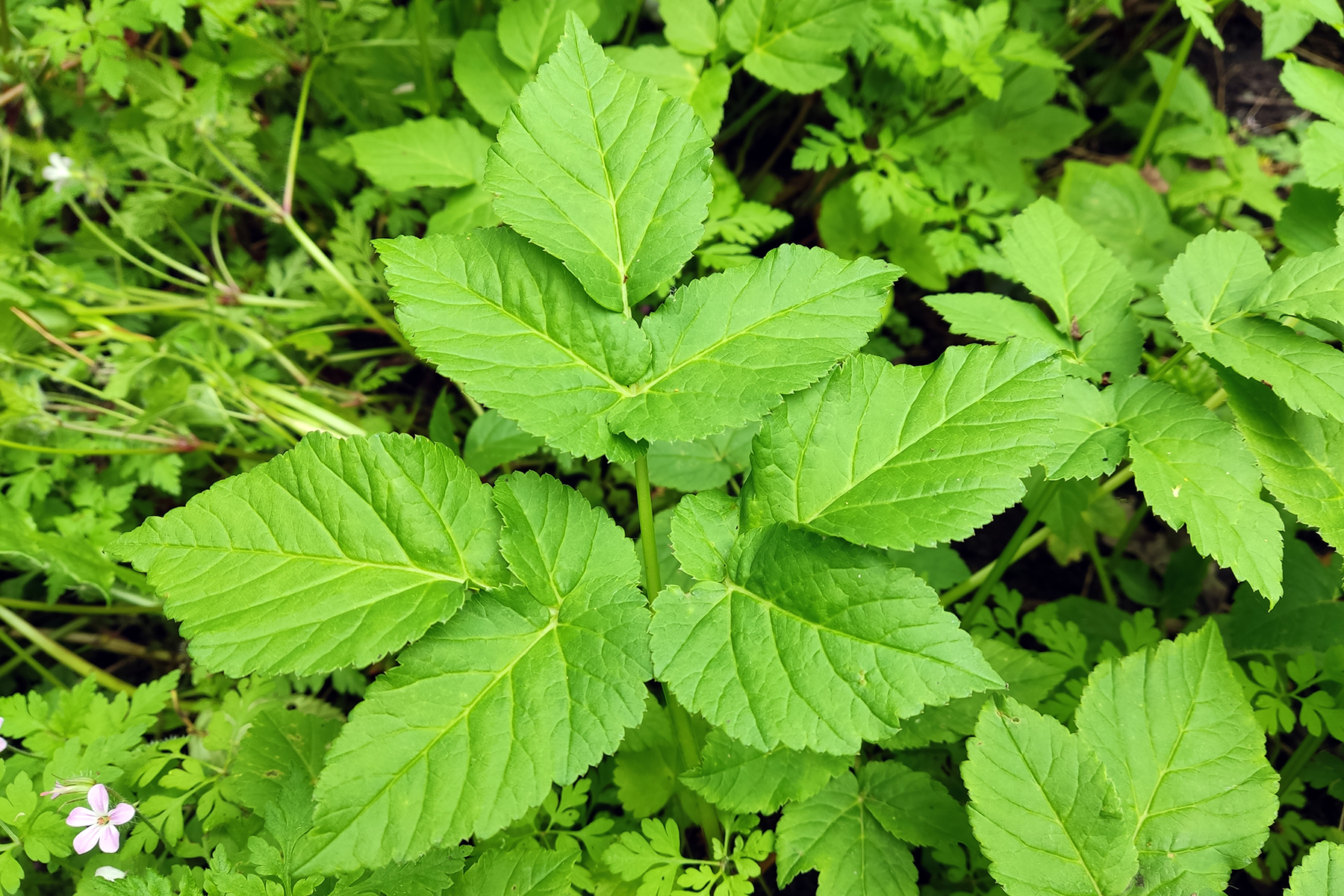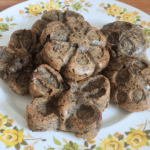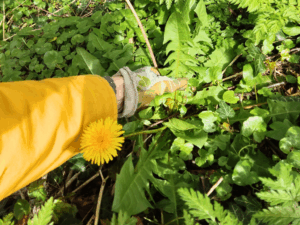Ground Elder, Foraging Guide for Guinea Pigs
Can Guinea Pigs Eat Ground Elder?
This plant is edible for guinea pigs
Where?
Europe and Asia
When?
March to September, blooming Jun-Jul
What?
Feed plant. Rich in vitamin C. Good for inflammation in joints and gut
How to Recognize Ground Elder
 The typical leaf structure with 7 big leaves
The typical leaf structure with 7 big leaves Ground elder spreads and grows quickly
Ground elder spreads and grows quickly The difference between a mature leaf (on the left) and a young leaf (on the right). The young leaves are more shiny.
The difference between a mature leaf (on the left) and a young leaf (on the right). The young leaves are more shiny. A young ground elder plant
A young ground elder plant


Mature plants can reach a height of nearly 1 meter tall.
Ground elder tastes a bit like celery[3] Younger leaves are less bitter than older leaves.
When and Where Does Ground Elder Grow
Ground elder begins to grow in spring on the Northern hemisphere, from March to September [1][2] Flowers bloom in May[2] at which time the leaves are less tasty than before bloom.
It spreads quickly through an elaborate network of roots, although it does also have flowers which bloom from June to August [1]
The plant is native to Northern Asia and Europe (green on the map), but has also been seen on other continents as an invasive species (yellow on the map).

Different Names for Ground Elder
Ground elder is a plant in the Apiaceae family. Here are some common names in different languages.
| Latin | Aegopodium Podagraria |
| English | Ground elder – Goutweed – Goutwort – Wild masterwort – Bishop’s weed – Herb Gerart |
| German | Gewöhnlicher Giersch – Wiesenholler – Bodenholunder |
| French | Herbe aux goutteux – Podagraire – Petite angélique – Herbe de saint Gérard |
| Spanish | Aegopodium podagraria |
| Dutch | Zevenblad – Hanenkam – Tuinmansverdriet – Heers |
| Danish | Skvalderkål |
Contents and Nutrients of Ground Elder
Ground elder is a very healthy feed plant for your guinea pigs and yourself. It contains above average vitamin A and C levels. It is also rich in plant phytonutrients (flavonoids, rosin, and phenolic acids), which are vital to a guinea pig’s herbivore digestive system.
| Water contents | |
| Energy (per 100g) | |
| Protein | 5.5 – 27 g |
| Total fat | 0.7 g |
| Carbohydrate | 4.8 g |
| Sugars | 0 g |
| Dietary fiber | 4 – 11 g |
| Potassium | 400 mg |
| Calcium | 1.1 g |
| Magnesium | 40 mg |
| Phosporus | 120 mg |
| Vitamin A | 400 µg |
| Vitamin B1 | 200 µg |
| Vitamin B2 | 100 µg |
| Vitamin B3 | 800 µg |
| Vitamin B6 | 200 µg |
| Vitamin B12 | |
| Vitamin C | 200 mg |
Sources for nutrient count
- Zevenblad voedingswaarden (Mergenmetmetz.nl)
Medicinal Uses for Ground Elder
Ground Elder is not a highly medicinal plant and is therefore suitable as a feeding plant for guinea pigs. They can eat it in large quantities. It tastes somewhat like parsley and carrots. It is also said to be a calming, soothing herb.
The large amount of vitamins A and C and its diuretic properties make it a very healthy plant to eat. It reduces inflammation, reduces cramps, and lowers acidic levels in the body. In folk medicine, it is used for treating gout (hence the English alternative name of goutweed) and rheumatism.[1] It can also be useful for treating nettle burns and insect bites. If you bruise the leaves to a sticky, juicy texture and rub it over your skin, it will give relief.
How to Plant Ground Elder Yourself
Most gardeners consider Ground Elder to be a pesky weed, as it tends to outperform other nutritious plants[2] But you know how useful and tasty it can be! Still, if you don’t want your garden to be overrun, you can consider planting the herb in a separated container.
Seeds are available in select organic stores. However, it’s much easier to dig out a few plants with the roots from an existing field and plant them in your own garden. Ground elder is strong and spreads through the roots, so transplanting the roots to your own garden will soon give you large quantity of the plant.
It likes sunny places with significant moisture. As most weeds, it prefers nitrogen-rich soil.
Recipes with Ground Elder for Humans
Sources
- Eetbare Wilde Planten (Fleischhauer, S.G., Guthmann, J., Spiegelberger, R.), 2015. Schildpad Boeken, ISBN: 978-90-77463-25-3. Transl. from German
- Welke Eetbare Wilde Plant is dat? (Bastgen, C., Schröder, B., Zurlutter, S.), 2023. Kosmos Uitgevers, ISBN: 978-90-4392-881-6. Transl. from German
- Salades van de Godin: Eetbare wilde planten, 2005. (Wijn, Monique). De Godin, eetbaar landschap, Winsum.






